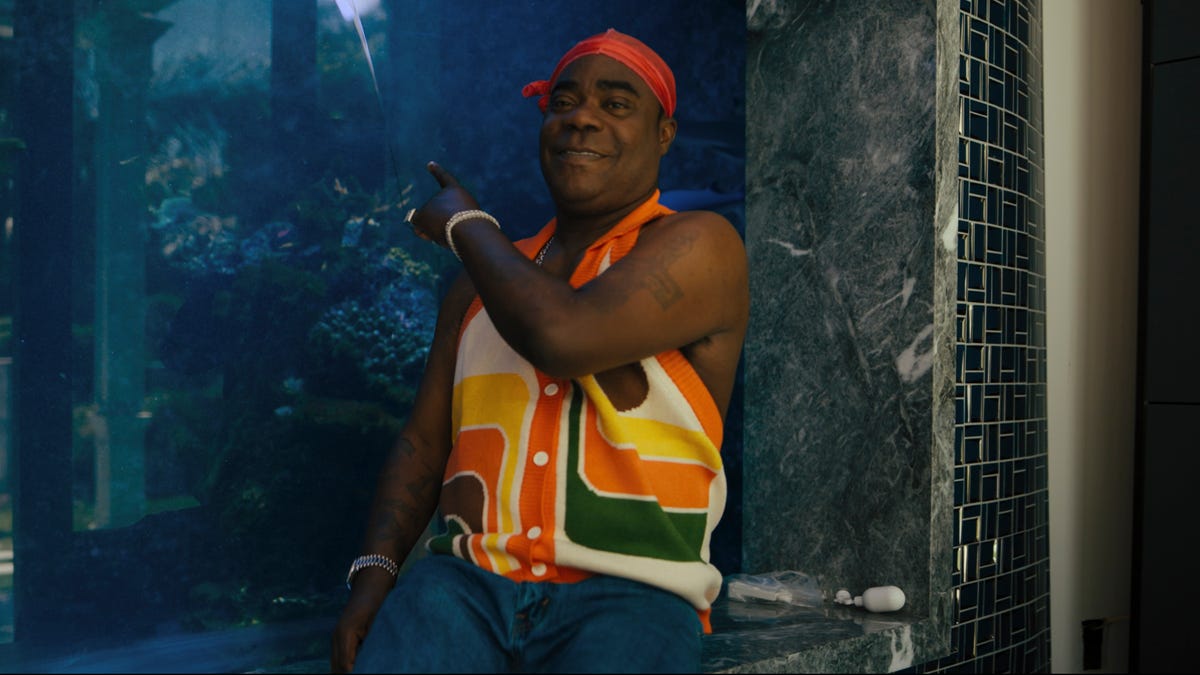At the 60th annual Academy of Country Music Awards on May 8, Jelly Roll and Shaboozey delivered an energetic performance of their duet “Amen” alongside a dancing choir.
At a ceremony broadcast live from the Ford Center at The Star in Frisco, Texas, and hosted by Reba McEntire, the pair hit the stage after Jelly Roll performed his 2024 song “Heart of Stone.”
Donning all white, Shaboozey appeared on a circular secondary stage to kick off the pair’s new song, which was released on April 24. A choir appeared behind the pair as they danced and harmonized simultaneously with Shaboozey joyfully belting the gospel-country track.
“Somebody say a prayer for me / ‘Cause the pills ran out and I still can’t sleep,” Shaboozey sang, with Jelly Roll joining him on stage.
“Somebody send a word upstairs / ‘Cause the bar’s shut down and I’m God knows where / So should knock on Heaven’s door / ‘Cause mine ain’t working anymore.”
And though the lyrics to the tune may have been tinged with sadness, Shaboozey and Jelly Roll delivered hardy and powerful vocals.
At the end, Jelly Roll began preaching to the audience with power in his voice and his hand raised in the air.
Who is Shaboozey?
Shaboozey, born Collins Obinna Chibueze, is a 29-year-old singer-songwriter and rapper whose music combines country, hip-hop and rap elements.
The Virginia native is best known for his hit “A Bar Song (Tipsy),” which spent 27 weeks at the top of the Billboard Radio Songs chart, becoming the longest-running No. 1 song in the chart’s history.
In May 2024, Shaboozey released his record “Where I’ve Been, Isn’t Where I’m Going.” In April, he released a complete edition of the record.
Recently, Shaboozey received five Grammy nominations, performed at Coachella and Stagecoach Festival and made his Met Gala debut on May 5.
Who is Jelly Roll?
Jelly Roll, born Jason DeFord, is a 40-year-old country music singer whose career continues to skyrocket. A Nashville native, Jelly Roll broke into the scene in 2020 and 2021 with hits “Save Me” and “Son of a Sinner.”
Now, he’s a four-time Grammy Award nominee and CMT and CMA Award winner, best known for his hits “Need a Favor” and “I Am Not Okay.”
This year, Jelly Roll debuted his gospel track, “Hard Fought Hallelujah,” with Brandon Lake, at the Grand Ole Opry and headlined at Stagecoach Festival in April.
Jelly Roll, who was formerly incarcerated due to robbery and drug charges, has also been in the headlines recently as the Tennessee Board of Parole recommended a pardon, which would clear his criminal record.
Now, Jelly Roll is a vocal proponent for prison reform and an advocate for incarcerated youth. Later this month, Jelly Roll will hit the stage at the Music City Rodeo.







